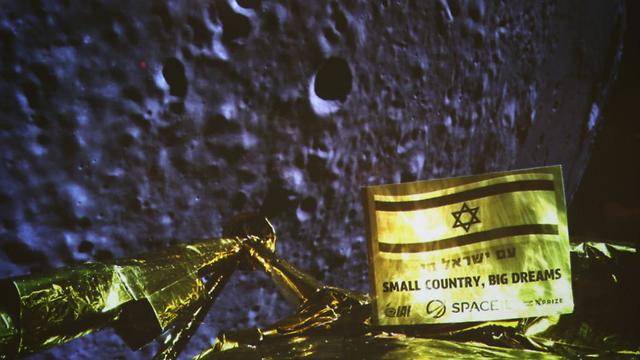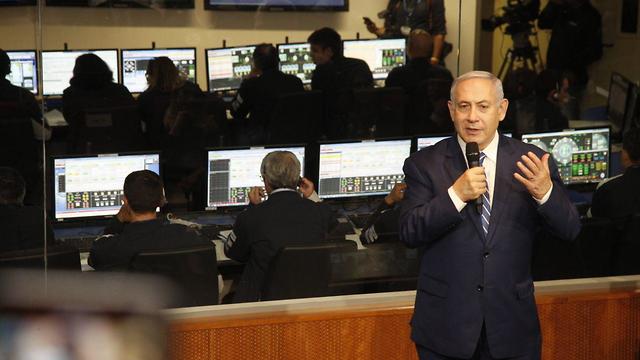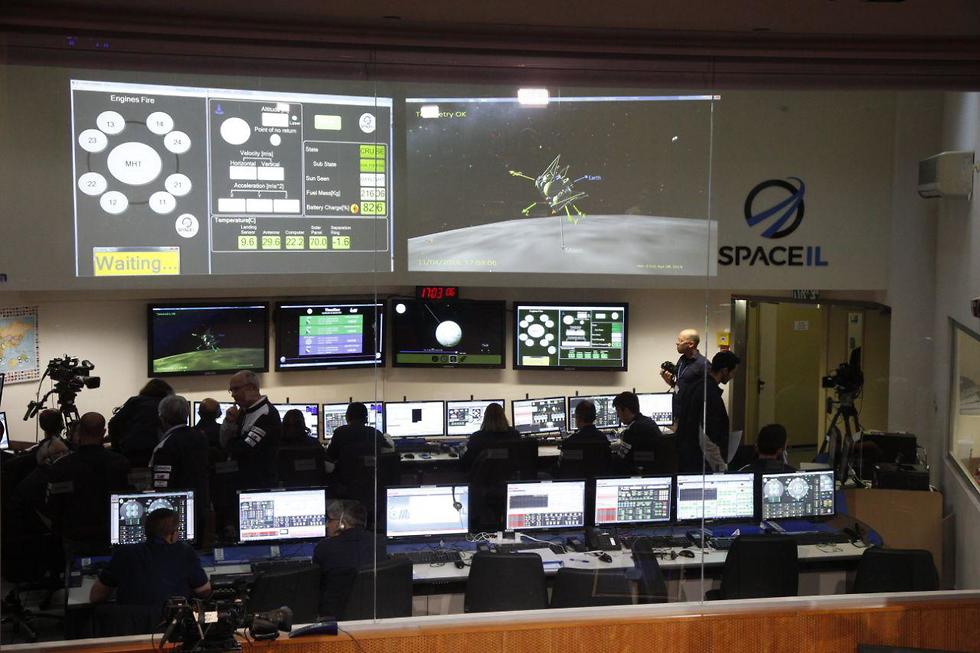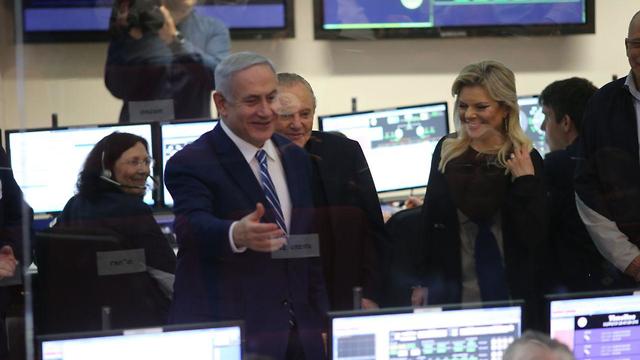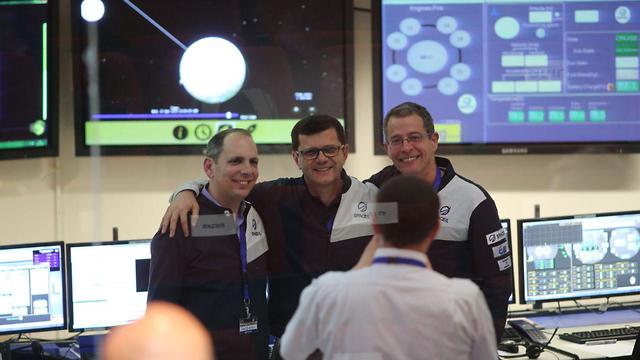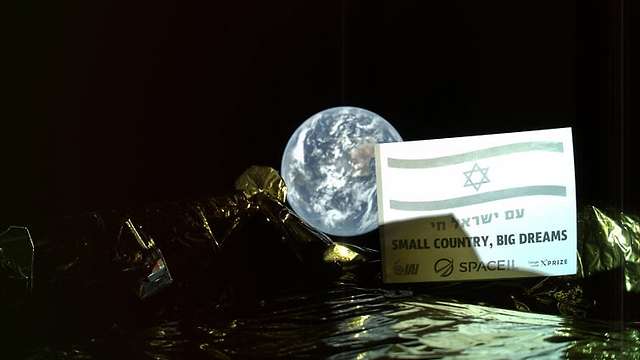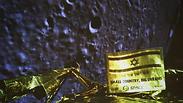

Beresheet spacecraft reaches moon but landing unsuccessful
The little craft aimed to end its six-week journey by making the Jewish state one of only four nations in the world to have achieved a lunar landing but an engine failed and mission control lost radio contact as the spacecraft fell and crashed into the moon's surface.
Israel on Thursday was set to join just three other nations who have successfully landed on the moon, but it was not to be. The unmanned robotic lander suffered periodic engine and communications failures during the 21 minutes or so of the landing sequence, the support team said and the spacecraft descended in a freefall, crashing into the moon's surface.
Prime Minister Benjamin Netanyahu and his wife Sara and son Yair were present at the Yehud command room to watch the landing. Following the failure, he said: "If at first you don’t succeed you try again.
"We reached the moon and we will try again. Next time we want a soft landing. The attempt itself is a major accomplishment," Netanyahu said.
Minutes into the landing mission, the spacecraft took a selfie photo with the moon. But suddenly, mission control announced that they lost contact with the craft, whose main engine apparently failed. The craft then proceeded to descend rapidly and crash into the moon's surface.
SpaceIL President Morris Kahn said: "We were not successful, but our achievement is great." He thanked the engineers and all the staff who worked on the program.
"We definitely crashed on the surface of moon," said Opher Doron, general manager of the space division of Israel Aerospace Industries. He said the spacecraft was in pieces scattered at the planned landing site.
Doron said that the spacecraft's engine turned off shortly before landing. By the time power was restored, he said the craft was moving too fast to land safely. Scientists were still trying to figure out the cause of the failure.
"One of the inertial measurement units failed. And that caused an unfortunate chain of events we're not sure about," he said. "The engine was turned off. The engine was stopped and the spacecraft crashed. That's all we know."
President Reuven Rivlin hosted dozens of youth for a viewing party at the President's Residence. Following the failure, he told the children: "Yes, we are disappointed, but there is no doubt that our achievements and abilities - of our scientists and of our country - are amazing.
"To bring a spaceship to the Moon costs a huge fortune and we with very little resources and money brought Genesis almost to the Moon. When we believe — we achieve. True, sometimes there are disappointments, but these are null and void compared to the achievements we reached, this night as well. That is why I am so happy to be here as president of this country with so many children. When we were children like you, we never dreamed that we would make a journey to the moon. I hope you will be the scientists who will reach the moon and achieve much greater achievements. This is an important evening for the State of Israel, for the citizens and the children of Israel who see what we can do when we want and make the effort," said Rivlin.
The president then led the crowd in singing the national anthem, Hatikvah.
Earlier, the prime minister recalled the excitement, followed by great sadness, when Israeli astronaut Ilan Ramon flew a space mission with NASA. Then, upon reentry into the Earth's atmosphere, the Space Shuttle Columbia exploded, killing the astronauts.
The project was the brainchild of Israeli entrepreneurs Yariv Bash, Yonatan Weintraub and Kfir Damari, who decided nine years ago to accept a challenge by Google to design a spacecraft that could land on the moon. The challenge ended last month without a winner, but the three - who went on to form SpaceIL with main project sponsor Morris Kahn as chairman - never gave up.
Even Ben-Gurion International Airport joined in the national excitement, listing the little spacecraft on its arrivals board, indicating it was due to land on the moon at 10pm.
According to the plan, Beresheet was to touch down on the lunar surface at around 10:15. The operation was directed by a control center in the Israeli town of Yehud, some 12 km southeast of Tel Aviv.
Before it began its descent, Beresheet was orbiting the moon at 6,000 km/h; it would begin its autonomous landing when it reached 25km above the surface and 800 km from the landing site.
In order to control its landing, Beresheet had to simultaneously fire all nine engines for 15 minutes. When it was 5km above the surface, the craft's laser instrument that measured its height was to start updating the onboard computer regarding the distance to ground level so that it could synchronize its engine function.
The spacecraft was to slow its advance when it was one kilometer above the surface of the moon, and some 40 seconds from touchdown. When it reached a height of five meters, it was to shut off its braking engines and drop to the surface on four legs, specially developed in Israel, to cushion the blow.
After landing, Beresheet was to take a selfie and send it back to Earth using NASA satellites recruited to assist the Israeli space mission.
The mission - which involved a $100 million investment, a four-year construction process at Israel Aerospace Industries and SpaceIL, and a six-week space trip - aimed to see Israel join the US, China and the Soviet Union as the only ones to have achieved putting a craft on the moon.














